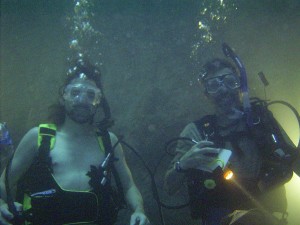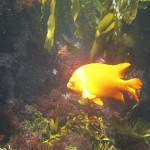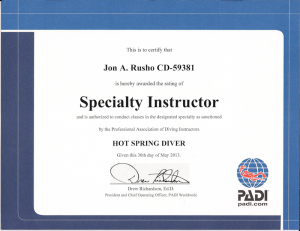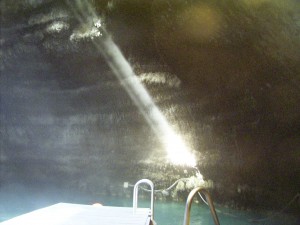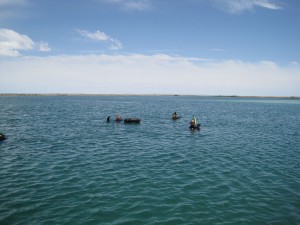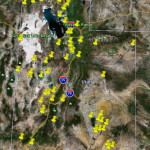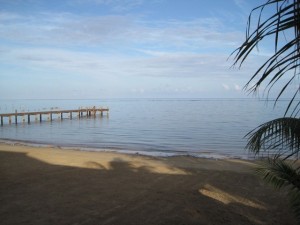Hot Spring Diver
featured in Sport Diver Magazine
When I started writing the outline for Hot Spring Diver, my goal was to provide useful information and safety guidelines for enjoying the hot springs we find in Utah. I was rather stunned to be contacted by Sport Diver Magazine because they were interested in the Hot Spring Diver PADI Distinctive Specialty. In the April 2014 issue, Hot Spring Diver appears in “The Planet’s 10 Coolest PADI Specialties” I’m truly honored that Sport Diver Magazine chose my Hot Spring Diver specialty for the article.
A few people have contacted me with questions about the course. Here’s the nutshell version:
- Minimum age: 10
- Prerequisite Certification: PADI Open Water Diver, PADI Junior Open Water Diver or equivalent
- Recommended: Altitude Diving experience and training
- Number of dives: 2
- Approximate course length: 6-10 hours, including dives and knowledge development.
There is a short presentation that covers:
- What is a Hot Spring?
- Hot Spring Characteristics
- Hot Spring Locations
- Techniques for the Hot Spring Diver
- Equipment considerations for the Hot Spring Diver
My preferred location to teach the Hot Spring Diver course is at the Homestead Crater, since it is an easily accessible dive site for divers of almost any ability. As with any Hot Spring Dive in Utah, it is an altitude dive (dive 1000ft/300m or more above sea level), so I’ll review Altitude Diving procedures as part of the course if needed.
I can arrange for groups to take the course and streamline the process for Crater reservations and assist with arranging accommodations. If you have a dive club or group that want’s to take the course, please contact me.
Hot Spring Diver Pro Training
For PADI Instructors, I do offer Specialty Instructor Training for the Hot Spring Diver Distinctive Specialty. As with any PADI Specialty training, you’ll need to meet the same performance requirements of Hot Spring Divers as well as teach portions of the course. A written instructor guide and slides are available for PADI Instructors taking the Hot Spring Diver Instructor training course. Contact me for more information.
